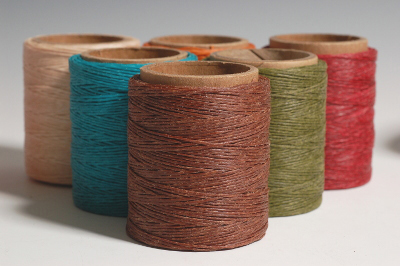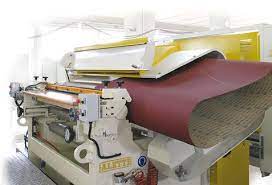Leather has a long history of being linked to luxury, toughness, and aesthetic appeal. The art of leathercrafting, where skilled artisans transform unfinished animal hides into stunning works of art, forms the basis for exceptional leather items. In this blog post, we'll go deep into the intriguing world of leather craftsmanship, painstakingly dissecting the intricate steps, time-tested practises, and unshakable dedication required to produce leather goods of the highest calibre.
The Legacy Of Leather Crafting
:max_bytes(150000):strip_icc()/stitchingpony-0018c5148c7647d9a0a44fb4d5000649.jpg)
Leather crafting is an ancient art that dates back centuries. From the earliest civilizations to modern times, artisans have utilized their skills to mold and shape leather into functional and aesthetically pleasing objects. Highlighting the historical significance of leather crafting sets the stage for understanding its enduring appeal and time-honored traditions.
In ancient civilizations such as Egypt, leather crafting played a vital role in society. Leather was used for a range of purposes, including clothing, footwear, armor, and even ceremonial items. Skilled artisans meticulously worked with leather, employing techniques that have been passed down through generations.
During the Middle Ages, leathercrafting thrived in Europe, particularly in guilds where apprentices trained under master craftsmen. These guilds upheld stringent standards and ensured the transmission of knowledge from one generation to the next. Leather armor, bags, belts, and footwear were highly sought-after, and artisans were revered for their craftsmanship.
The Renaissance period witnessed a surge in luxury leather goods. Highly skilled artisans, such as those in Florence, Italy, created intricately tooled leather items, showcasing their mastery of techniques like embossing and leather carving. These exquisite creations became coveted status symbols among the elite.
The leather business underwent a tremendous transformation as a result of the Industrial Revolution. The development of sewing machines and automated tanning techniques revolutionized the manufacture of leather. While mass production made leather items more widely available, it also posed a threat to traditional workmanship, which resulted in a drop in the popularity of handcrafted leather goods.
However, interest in handcrafted and artisanal goods, notably leather goods, has recently come back into vogue. The distinctiveness, quality, and sustainability that handcrafted leather-making offers are becoming increasingly valued by consumers. The desire of craftspeople to conserve and recreate the craftsmanship of leather crafting has sparked a rebirth of old techniques.
Leather Selection And Preparation
The journey of leather crafting begins with the careful selection of premium hides. Explain the importance of factors like grain, thickness, and texture when choosing the ideal leather for a particular product. Discuss how artisans meticulously clean, soften, and treat the leather to ensure its durability and usability.
Leather Sourcing
Ethical and sustainable sourcing of leather is of utmost importance in today's conscientious market. Artisanal brands often prioritize working with suppliers who adhere to strict standards regarding animal welfare and responsible practices. They ensure that the leather they use comes from animals that have been raised for food or other purposes, avoiding exotic or endangered species.
Leather Types and Characteristics

Different types of leather offer distinct qualities and are suitable for various applications. Full-grain leather, known for its natural imperfections and strength, is highly regarded for its durability and aging beautifully over time. Top-grain leather is more uniform and often used for products requiring a smoother finish. Suede and nubuck leathers have a soft, velvety texture and are commonly used for luxurious accessories. Understanding the characteristics of different leather types allows artisans to choose the most appropriate material for each project.
Tanning Methods
Tanning is the process of treating raw animal hides to transform them into durable and usable leather. There are various tanning methods, each with its unique attributes. Traditional vegetable tanning involves using natural tannins derived from plants, resulting in a rich and organic-looking leather. Chrome tanning, on the other hand, utilizes chromium salts and produces a more uniform and water-resistant leather. Other methods, such as aldehyde tanning or combination tanning, offer specific properties suited for different purposes. Artisans consider the desired characteristics of the final product and the environmental impact of the tanning process when selecting the appropriate method.
Design And Pattern Making

Before any cut is made, skilled craftsmen translate their creative vision onto paper through intricate designs and patterns. Elaborate on the artistry involved in conceptualizing unique designs, considering functionality, aesthetics, and customer preferences. Explore the techniques used to create patterns and templates that serve as a blueprint for the leather-cutting process.
Inspiration and Conceptualization
The design process begins with inspiration. Leather artisans draw inspiration from various sources such as nature, architecture, fashion trends, cultural motifs, or even their own imagination. They study current market demands, customer preferences, and brand identity to ensure their designs resonate with the target audience. Sketches, mood boards, and visual references help articulate and refine the design concept.
Functional Considerations

In addition to being aesthetically beautiful, leather products should also be useful and practical for everyday use. Designers provide great consideration to elements like the product's intended function, ergonomics, usability, and organizational features. In order to ensure that the design fulfills its intended function without sacrificing aesthetic appeal, they work to achieve a balance between style and practicality.
Materials and Leather Adaptation
Leather possesses unique properties that influence the design process. Its thickness, texture, and flexibility impact how it can be manipulated and shaped. Designers consider these characteristics when adapting the design to suit the specific leather type chosen. They make decisions on whether to incorporate softer leather for a supple and draping effect or utilize thicker leather for structural support and durability.
Pattern Making
Pattern making is a crucial step in transforming a design concept into tangible components. Artisans translate the design into precise patterns that serve as a blueprint for cutting and assembling the leather. They consider factors such as seam allowances, grain direction, and the desired fit of the finished product. Skilled artisans use specialized tools like rulers, compasses, and tracing wheels to draft and refine the patterns.
Leather Stitching And Assembly

Stitching is where the leather product truly comes to life. Discuss the various stitching techniques such as saddle stitching, machine stitching, or hand-stitching, emphasizing their strengths and aesthetic effects. Explore how artisans painstakingly stitch each piece together, ensuring durability and creating visually appealing seams that complement the overall design.
Stitching Techniques
A variety of stitching methods are used by leather craftspeople to seamlessly attach leather components. Saddle stitching, a hand-stitching technique renowned for its sturdiness and endurance, is one of the most well-liked methods. It entails making interlocking stitches with two needles and a length of thread to add additional security. Another choice is machine stitching, which is quick and reliable for longer production runs. However, hand stitching is frequently preferred due to its artisanal quality and ability to precisely adjust tension and stitch placement.
Thread Selection

The final product's durability and aesthetic appeal depend on the thread selection. The best threads for leather craft, including waxed nylon or polyester threads, are chosen by artisans. These threads offer durability, abrasion resistance, and colorfastness. The thread color is carefully chosen to either contrast or match the leather, increasing the appearance.
Stitch Placement and Seam Types
The placement of stitches and the type of seams used can significantly impact both the visual appeal and the structural integrity of the leather product. Flat-felled seams, where the raw edges are enclosed within the seam, provide a clean and finished look while enhancing strength. Butt seams, where the edges of the leather are butted together and stitched, are used when a minimal and inconspicuous seam is desired. Artisans carefully consider the design and function of the product to determine the most appropriate seam type for each component.
Stitch Length and Tension
Achieving consistent stitch length and tension is vital for a polished and professional finish. Artisans pay close attention to these aspects, ensuring that the stitches are evenly spaced and maintain consistent tension throughout the entire stitching process. Proper stitch length and tension contribute to the durability of the product and prevent uneven wear over time.
Leather Finishing And Detailing

The finishing touches define the quality and character of a leather product. Detail the techniques used to refine the edges, dye or paint the leather, and apply protective finishes. Discuss the meticulous attention given to enhancing the product's aesthetic appeal, smoothing rough surfaces, and adding embellishments or hardware.
Edge Treatment
The edges of leather products are often treated to create a smooth and clean finish. This can be achieved through various methods such as edge dyeing, burnishing, or applying edge paint or wax. Edge dyeing involves applying dye to the raw edges, resulting in a uniform and consistent color. Burnishing involves rubbing the edges with a burnishing tool or a slicker to compress and smooth the fibers, creating a polished appearance. Edge paint or wax can be applied for added protection and to achieve a desired color or sheen.
Surface Finishes
The surface of leather products can be finished in different ways to enhance their appearance and protection. Common techniques include applying leather conditioners, oils, or waxes to nourish and moisturize the leather, enhancing its suppleness and preventing it from drying out and cracking. These treatments also provide a subtle sheen and deepen the color of the leather. Alternatively, a protective topcoat or sealant can be applied to provide a barrier against moisture, stains, and everyday wear.
Coloring and Dyeing
Leather can be dyed or colored to achieve a desired hue or to highlight specific areas of the product. Aniline dyes are transparent dyes that allow the natural grain and texture of the leather to show through. Semi-aniline dyes provide some level of opacity while still maintaining a natural appearance. Pigmented dyes or paints offer more coverage and can be used to achieve solid or vibrant colors. Artisans carefully apply the dyes or paints, ensuring an even and consistent application to create a uniform finish.
Polishing And Buffing

Polishing and buffing techniques add depth and shine to the leather's surface. Artisans may use a variety of tools, such as brushes, soft cloths, or buffing wheels, to gently polish the leather. This process helps distribute natural oils, smooth out any imperfections, and achieve a lustrous appearance. The level of shine desired can vary, from a subtle matte finish to a high-gloss polish.
Maintenance And Care Of Leather Goods
Educate readers about the proper maintenance and care required to preserve the longevity of leather goods. Offer tips on cleaning, conditioning, and storing leather products, emphasizing the importance of regular maintenance to keep them looking their best.
Conclusion
The art of leather crafting encapsulates a fusion of tradition, skill, and creativity. From the careful selection of hides to the precise stitching and detailing, every step in the process contributes to the creation of unique and timeless leather goods. By understanding and appreciating the craftsmanship behind leather products, we develop a deeper admiration for these enduring symbols of luxury and style.
